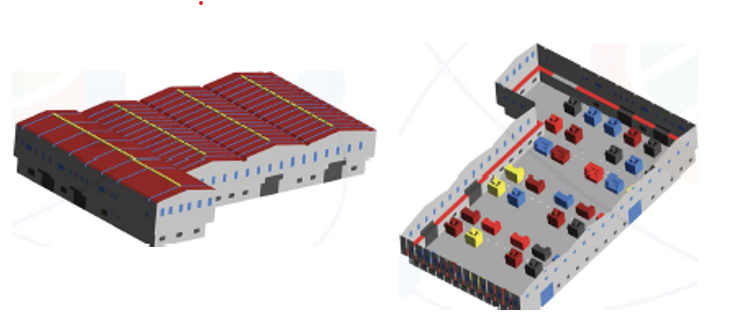Inorder to reduce higher cooling demands for buildings or industries, passive cooling by night-time flushing can be seen as a promising option. Particularly in tropical and sub-tropical climates where the difference in peak day-time and night-time temperature is about 10˚C – 13˚C.
Those buildings with high thermal mass benefit the most in this type of strategy.
The natural ventilation system can bring in cool air during night, thereby reducing the temperature of the internal fabric of the building.
Night time cooling generally provides 1.5˚C – 2˚C lower than the outside during day time peak temperature. This also reduces the need for mechanical cooling for few hours during the day.
It also helps to flush stale air, odors, irritants etc. from the building/industry which was produced during the day time operation.
Scope of presented work
In this case study, the effect of night-time ventilation is validated for natural ventilation and hybrid ventilation (with existing mechanical ventilators running at full capacity) during a peak summer day.
Comparing the results for both strategies to visualize the effect of day-time indoor temperature.
Approach and methodology
- The whole Industry is modelled with all machines, support structures like columns, beams etc.
- CFD simulations is performed for 24 hours in a peak summer day. During the day time operation, the internal loads coupled with solar heat gain is simulated.
- Thickness of cladding and roofing sheets were considered along with thermal insulation on the roof.
- Fan performance curve is used for modelling ventilators in case of hybrid ventilation.
- All shutters, doors, and windows we considered 90% open on all sides during night time.
- In this analysis it is assumed that the night-time ventilation starts at 19hrs and ends at 7hrs.

Solution from CFD analysis:
- From numerical simulations it is evident that the night flushing has significant effect in controlling the thermal behavior of the internal fabric of the Industrial building.
- Transient analysis performed during evening hours shows fall in temperature of machines and the overall internal temperature of the building.
- Cooling the thermal mass during night provides radiative cooling for day time operation, thereby increasing the thermal comfort at the working level.
- This thermal lag during day time is detrimental in controlling the internal temperature of the building during peak hours.
- It has reduced the overall heat load inside the building during operations for the next day.
Graphler Technology, one of the best CFD consulting services providers. We also specialize in stress analysis services, structural analysis services, and structural design services. For more information on night purging and how you can incorporate it into your next project, please feel free to contact us today.


